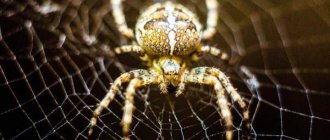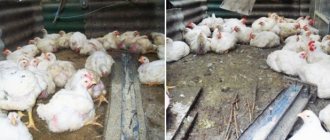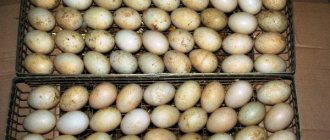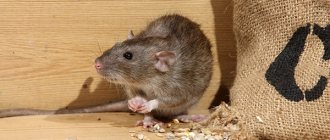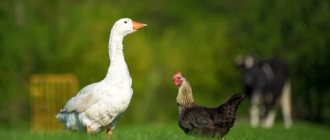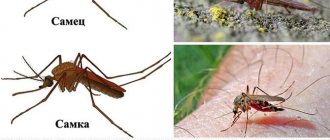Rabbits are the fastest maturing animals. They begin puberty at four months. Female rabbits are fertile and produce offspring almost every month. Therefore, when the sexual activity of furry rodents is reduced, this causes concern among rabbit breeders. Despite the fertility of these animals, there are situations when the female does not allow the rabbit to approach her, or, conversely, he is not interested in his partner. Identifying the reasons why rabbits are not covered and taking effective measures to eliminate them will improve farm productivity.
At what age are rabbits allowed to mate?
The age at which an animal can be allowed to mate directly depends on the breed:
- Medium-sized rabbits (California, New Zealand white or red, Soviet chinchillas, Viennese blues, Soviet silver, Rex, Burgundy) are allowed to breed at the age of 4-5 months. In this case, the weight of the female must be at least 2.8 kg.
- If you keep large giant rabbits (gray and white giants, Risen, Belgian Flanders, white Pannon, French rams), then they should be allowed into mating a little later. Females are hatched at the age of 5-6 months, their weight should be at least 3.8 kg.
- It is recommended that males be allowed to breed a little later. Medium breed rabbits can be allowed to visit a female no earlier than he is 5 months old, large breeds - no earlier than 6-7 months.
When can cubs be separated from their mother?
If a mother rabbit feeds her babies responsibly and takes good care of them, sooner or later the question will arise when to remove the babies from her and when she will be ready for the next litter.
If the baby rabbits do not have any deviations in physical development, there is no point in laying them before one month: there is no point in doing so. Usually by this time the rabbit stops feeding them milk, and the animals are ready to switch to an adult diet. By this time, the weight of one month-old cub is about 700 g.
As for raising broiler rabbits (raised for meat), they are removed from the mother later: no earlier than two months. Moreover, their average weight is 1.5 kg. After weaning broiler chicks from their mother, it is necessary to carefully sort them by sex and weight and, based on the results obtained, place the animals in cages.
As for the answer to the question of when the female will be ready for the next mating, the figure may vary. It is worth starting from the fact that about 4-6 litters per calendar year are considered the norm; exceeding this figure is extremely undesirable, otherwise it will negatively affect both the health of the rabbit and the quality of the offspring.
How to recognize heat in a female
Females begin to come into heat at 3.5-4 months. You can recognize it by the following signs:
- The most reliable way is to inspect the loop. The female is carefully placed on her back (it is necessary to hold her paws, as rabbits hit them hard and can tear the skin of her hands with their claws). Then you need to gently press on the skin around the loop. In a female in heat it is enlarged and the color is bright pink.
- Many female rabbits change their behavior during the hunting period: they become aggressive, throw bowls around, attack the hand extended to her, and bite. The female may refuse to eat these days.
- Some female rabbits, when they come into heat, begin to carry bundles of straw or hay in their mouths.
- Another way is to place your hand on the female’s rump. A female rabbit in heat lies on her stomach, raises the back of her body, and lifts her tail up. If the female runs away and is clamped down, it is too early to place her with the male. But this method is not always indicative.
Normally, hunting for female rabbits lasts 3-5 days. Then comes a period of rest (7-8 days), after which the female is again ready for mating. The female rabbit comes into heat until she is fertilized.
Causes of false pregnancy
- Features of the reproductive system.
Unlike other mammals, ovulation in rabbits is caused not by regular hormonal changes in the body, but by the fact of mating. Reproductive system of a female rabbit - External factors. For example, with increasing daylight hours in the spring and summer, the likelihood of a false pregnancy becomes much higher.
- Sterile mating. If a female lives in the same area as a castrated rabbit, after mating she will think that she is fertilized. In fact, the male is sterile.
- Hormonal disorders. After fertilization, the female body releases progesterone. It is he who is responsible for the course of pregnancy and the development of the embryo in the womb. Its release without mating may be a symptom of a malfunction of the reproductive system of a mammal.
- Neighborhood with other females. If a rabbit breeder keeps several female rabbits in one cage, over time one of them will show a dominant position and take on the role of a male. Sexual intercourse with such an individual never ends in fertilization, but female rabbits sometimes think otherwise.
- Excessive attention from the breeder. This cause of false pregnancy is more relevant to home breeding of pets. Rabbits get excited very quickly even from stroking their backs. If you see that your pet is pressed to the ground, while its back is raised in anticipation of sexual intercourse, it is better to stop petting.
Why the rabbit is not covered: solution to the problem
Sometimes rabbit breeders are faced with a problem when females do not hatch or mating occurs, but pregnancy does not occur. The main reason for this phenomenon is the animal’s excess weight. In this case, the female is put on a diet: for 5-7 days she is fed only hay, you can add a small handful of oats. Compound feed is excluded from the diet; after coating, it is added back in limited quantities.
If the female attacks the rabbit and does not allow him to cage, this indicates that she has not yet come into heat. In this case, you should put the rabbit in the cage and watch the loop. As soon as she turns red and swells, the female is placed again with the male.
Reasons for refusal
If such a situation arises, you first need to find out why the female rabbit does not want to mate and does not allow the male to approach her. The main reasons for refusal are:
- The inappropriate period for mating is the absence of hunting;
- The rabbit is not used to a partner;
- Improper feeding;
- Inappropriate age;
- Incorrect climatic conditions;
- Presence of diseases;
- Failure to comply with the basic rules for keeping an animal;
- Shedding.
Even rabbits can be moody. Sometimes the female rabbit does not allow the rabbit to approach because she does not feel sympathy. External characteristics, habits, and character of the partner play an important role for females during the mating period.
How to choose the right manufacturers
Selecting animals for breeding is an important step. You cannot buy the first rabbit you come across, as in this case there is a risk of getting a sick animal. If you plan to engage in breeding, you should buy males and females from different farms (not related to each other).
Here are the main criteria that should be followed when choosing future manufacturers:
- Appearance of a rabbit. The animal must be active, have shiny and healthy-looking fur, clean ears, and lively bright eyes.
- Don't buy rabbits that have damp or wet hair around their eyes and nose, or if there is plaque or scabs in their ears. Also, you should not buy an animal with dirty fur under its tail.
- The rabbit should be moderately well-fed. If the animal is thin, it means that it was underfed, which will not have the best effect on its health. The cause of exhaustion may be a lack of appetite due to illness.
- Be sure to check the animals' genitals. In males, they look for the presence of both testes, the absence of inflammation and pathologies of the penis. In females, the condition of the loop is checked for the presence of discharge.
- If you are choosing mature breeding animals, look at their descendants and ancestors. Check to see if your rabbit meets the basic characteristics of its breed. Inspect it carefully for any blemishes or significant deficiencies.
- Ask the seller to weigh the rabbit in front of you - its weight must correspond to the weight stated in the breed standard.
- It is not recommended to purchase very small rabbits (up to 2 months). The optimal age for purchase is 2-4 months, and the male should be 30-60 days older than the female. Avoid purchasing animals that are already 3-4 years old, since at this age productivity is already declining.
- You should not buy heavily pregnant rabbits, as moving them can provoke an abortion. It is better to purchase females that have been bred recently (from 1 to 10 days).
Period of economic use of breeding rabbits
Rabbits, with proper care and maintenance, live up to 8-10 years, but the period of their economic use is much shorter:
- Females are kept on the farm for up to 3-4 years, however, if the female rabbit regularly bears multiple offspring and copes with feeding them, you can leave her on the farm for another 1-3 years.
- Males are used for breeding longer - up to 5-6 years, but only on condition that he copes with his task well. If a rabbit produces low-fertility offspring, and its offspring slowly and poorly gain weight with adequate feeding, it makes sense to replace such a sire.
Mating process - recommendations
You can breed rabbits if the female does not allow the male to approach her by increasing their sexual activity.
Cage housing reduces the fertility of animals. If climatic conditions allow keeping rabbits in the wild during the summer, the chance of getting offspring increases. Also, the effectiveness of the event increases when individuals of different sexes are kept in neighboring cages. Getting used to the smell of a rodent of the opposite sex allows you to reduce the time for adaptation before mating. In this case, to get a positive result, it is enough to determine the female’s period of heat and place her in the cage with her gentleman.
If the female rabbit does not let the rabbit near her and squeaks and runs away from him, perhaps she is already pregnant
In this case, it is recommended to examine the individual and pay attention to the behavior of the rodent. During pregnancy, the behavior of rabbits changes. Sometimes pregnancy is not a barrier to mating again
But it is not recommended to allow such situations
Sometimes pregnancy is not a barrier to mating again. But it is not recommended to allow such situations.
If a rabbit has all the signs of pregnancy, but then suddenly disappears, a false pregnancy may occur. The phenomenon is associated with disruptions and hormonal disorders. The duration of a false pregnancy is 2–3 weeks. After the signs disappear, the false pregnancy passes, the animal is checked by a veterinarian and the mating is repeated during the hunting period.
The rabbit does not react to the female if he is tired or exhausted. In this case, it is recommended to provide the animal with peace and rest. Protect from exposure to irritating factors, provide sufficient clean water and high-quality food.
If the female has recently given birth, you should allow the body to get stronger and rest. Frequent matings and pregnancies weaken the animal’s body. When trying to mate animals in this case, the female bites her partner, does not allow him to approach her, and does not make contact. With a large litter, the rodent may also refuse to mate.
Thus, when breeding rodents, pay close attention to the conditions of keeping and feeding your pets, their health status and behavior.
It is important to find out the reasons for partners’ refusal to mate. If the female rabbit does not allow the rabbit to come near and screams, perhaps the partner is unattractive or the female is already pregnant. Careful checking of pets before mating, compliance with all conditions of keeping and care for animals is a guarantee of a positive result.
Careful checking of pets before mating, compliance with all conditions of keeping and care for animals is a guarantee of obtaining a positive result.
Let's consider why the female rabbit does not allow the rabbit to come near, because the productivity of the farm or household depends on the increase in the number of livestock. Eared animals are very prolific. The female is able to bring rabbits almost every month. It is not advisable to leave the reproduction process to chance. It is necessary to monitor every mating of animals. If a female does not make contact with a male, then the reasons for this behavior are identified and ways to solve the problem are sought.
How does the birth take place and what is needed for it?
The covered rabbit is placed in a separate spacious cage, measuring at least 100*60*50 (l*w*h*). A few days before giving birth, the female is provided with a queen cell. It can be inserted in the form of a wooden box or suspended (external).
Baby rabbit
The nest is filled with hay, which the female compacts on her own. Before the female rabbit gives birth (a couple of days before the expected birth date), the queen cell must be checked again. Some females may eat the hay or pollute it, in which case the litter is renewed.
Just before giving birth, the female rabbit tears down the fluff from her belly and chest and lines the nest with it. Some rabbits do this in advance, while others do this an hour before the babies appear.
Typically, labor occurs at night. Duration – from 15 to 60 minutes. The female licks the rabbits, feeds them, then covers the offspring with down and leaves the nest. There must be a bowl of clean snow or water in the cage, since after giving birth the animal experiences severe thirst and if it is not quenched, it may gnaw on the rabbits.
Stress during pregnancy
Bearing offspring and giving birth is accompanied by stress and stress for most eared animals. Animals that have already given birth, but not young females, tolerate pregnancy more easily. In young animals, under unfavorable circumstances, the maternal instinct disappears.
How many days it takes a rabbit to build a nest directly depends on the environment. Due to a stressful situation, sometimes the animal plucks the fluff too early. This material attracts parasites and insects and rolls up, so it is better to get rid of it.
If the animal is constantly nervous, then the likelihood of termination of pregnancy or miscarriage increases. A female rabbit will not build a nest in a place that she does not perceive as safe. Therefore, the first signs of fluff being pulled out are a signal to create the most comfortable living conditions. Ensure there are no strong odors, loud sounds, temperature changes or drafts.
Read also: Pasteurellosis of rabbits, sniffling, runny nose of rabbits, diseases of the upper respiratory tract, runny nose of rabbits, signs of pasteurellosis treatment, diseases of dwarf rabbits, rodent animals
The cage is cleaned carefully without sudden movements or the use of aggressive chemicals. When examining the animal, you must pick it up with clean hands, which have been previously rubbed with wormwood.
The pregnant female is isolated and contacts with other domestic animals are sharply limited. If the female rabbit did not make a warm nest, but gave birth and divided the litter incorrectly, then the offspring is doomed to death. In this case, the rabbits should be placed under the care of an experienced, calm nursing female.
Features of rabbit breeding in winter
Breeding rabbits in winter
- Rabbits tolerate even severe frosts well, but only if there is no draft or wind. Farmers get offspring from females in winter, but for this they need to follow some rules.
- During the cold months, it is better to move the cages with the rabbits indoors, and it does not have to be warm. You can put them under a canopy, which is covered on all sides with film, OSB, boards or other materials.
- In cages that are outdoors all year round, an insulated, or better yet heated, queen cell should be provided. There are several ways to make such a nesting box, but more often rabbit breeders use medical heating pads, which are placed under the bottom (it is better to make it from a galvanized sheet, since it is more thermally conductive).
- If the queen cell is made of boards or plywood, you can make a double floor. In this case, a heating pad is placed inside the box at the bottom, and a galvanized sheet is placed on top, on which a bedding of hay must be placed. In such a nest, the rabbits will be warm even in severe frost.
- If the floor of the queen cages is made of mesh, it should be covered with bedding (straw or hay) or a large piece of plywood on it during the winter.
Living conditions
Sometimes rabbits do not mate due to poor living conditions. A cramped cage is one of the main causes of animal discomfort. In order for the female to allow the rabbit to approach her, they are provided with a spacious habitat.
The temperature in the rabbitry is also an equally important factor. In the summer, the animals are too hot and this provokes the female to refuse mating. At the level of instinct, she senses bad conditions for her offspring. It is necessary to ventilate the room as often as possible and maintain the temperature there no higher than 25 degrees. The minimum level is not lower than 5 degrees. Drafts must be avoided. In warm weather, it is advisable to take the cage outside, but not into the open sun.
The fact of poor lighting is another reason why rabbits do not want to breed. Short daylight hours or a lack of windows are compensated by artificial light - at least 8 hours a day, and more in winter.
Inbreeding in rabbit breeding
Inbreeding in animal husbandry is the crossing of close relatives. With its help you can achieve both positive and negative effects. The advantages of inbreeding include:
- Possibility of breeding new breeds.
- Consolidation of necessary economic characteristics (color, weight gain, weight, exterior characteristics, etc.).
The disadvantages include:
- Obtaining offspring that are not viable, weak, or have serious defects (the birth of rabbits with various mutations, etc.).
- Uncontrolled inbreeding results in weak and sickly offspring with low viability.
- In rabbit farming, inbreeding involves selecting rabbits with the most distant degree of relatedness. Brother-sister, mother-son, daughter-father matings should not be allowed, since in this case there is a high risk of producing rabbits with mutations.
- On some farms, farmers are forced to resort to inbreeding, since it is not always possible to bring in foreign breeders.
If this situation arises, you should adhere to some rules:
- For mating, select distant relatives (for example, grandfather-granddaughter). There is no need for brothers and sisters, mothers and sons, fathers and daughters.
- It is better to send rabbits obtained from close inbreeding to slaughter. It is not recommended to use such individuals for further breeding, since their offspring will begin to exhibit undesirable qualities (increased susceptibility to disease, poor fertility and growth, etc.).
- For mating, you need to choose the healthiest and strongest animals with pronounced breed characteristics.
- If, as a result of inbreeding, female rabbits with a good exterior were obtained, they can be kept for breeding, but a male should be brought from another farm for them.
Although rabbits are very fertile animals, their reproduction requires constant monitoring by the farmer. Selection of good quality sires, properly organized mating and compliance with the correct housing conditions are the key to successful breeding of these animals.
Mating rabbits without hunting 100% result - on video:
